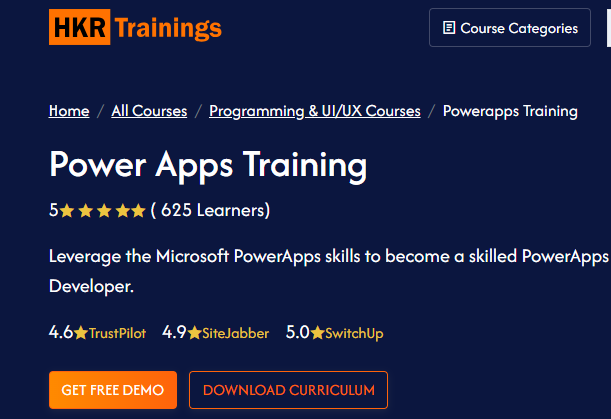What are Power Apps?
Power Apps is a revolutionary platform that empowers users to create custom apps without the need for extensive coding knowledge. At its core, Power Apps enables individuals to design and deploy applications tailored to their specific needs, accelerating digital transformation within organizations of all sizes. Whether you’re a business professional looking to streamline processes or an IT developer seeking rapid app development solutions, Power Apps offers a user-friendly interface and robust functionality to bring your ideas to life.
One of the key strengths of PowerApps Training lies in its seamless integration with other Microsoft tools such as SharePoint, Dynamics 365, and Teams. This interconnected ecosystem enhances collaboration and data sharing while promoting efficiency across departments. Moreover, Power Apps provides access to a rich repository of pre-built templates and connectors, making it easier for users to jumpstart their app development journey. By leveraging these resources effectively, individuals can build sophisticated apps that address complex business challenges with ease.
Benefits and use cases
Power Apps are incredibly versatile tools that can be leveraged across various industries and scenarios. One key benefit is their ability to streamline processes and automate tasks, ultimately saving time and improving efficiency. For example, businesses can create custom apps to track inventory, manage customer data, or streamline approval processes with ease. This not only enhances productivity but also enables organizations to adapt quickly to changing needs.
In the healthcare sector, Power Apps have proven invaluable for managing patient information securely and efficiently. Healthcare providers can develop apps that enable remote patient monitoring, schedule appointments, or track medication adherence. By harnessing the power of these apps, healthcare professionals can deliver better care while reducing administrative burdens. Additionally, Power Apps empower educators by enabling them to create interactive learning experiences tailored to individual student needs. With features like quizzes, feedback forms, and virtual simulations, teachers can engage students in new and exciting ways while tracking progress in real-time.
Key components and terminology
Understanding key components and terminology in Power Apps is essential for anyone looking to master this powerful tool. One crucial component is the canvas app, which allows users to design custom interfaces and functionality using a drag-and-drop interface. Power Apps also utilizes connectors, enabling seamless integration with various data sources such as SharePoint, Excel, and SQL databases.
Terms like controls refer to the elements you add to your app’s screens to interact with data or perform specific actions. These can include buttons, input fields, galleries for displaying records, and more. It’s important to grasp the concept of formulas in Power Apps as well since they are used extensively for configuring app behavior based on user interactions or data inputs. By familiarizing yourself with these key components and terminologies, you’ll be better equipped to create efficient and functional apps that meet your needs effectively.
Advanced Power Apps: Customization and Integration
Advanced Power Apps take customization and integration to a whole new level, allowing users to create highly tailored solutions that align perfectly with their specific business needs. By leveraging advanced features like custom connectors, formulas, and expressions, users can enhance the functionality of their apps and provide a seamless user experience. The ability to integrate Power Apps with other Microsoft 365 tools such as SharePoint, Teams, and Power BI opens up a world of possibilities for streamlining workflows and increasing productivity.
Customization in Advanced Power Apps extends beyond just the aesthetics of the app interface; it involves designing complex data models and implementing sophisticated logic using variables, collections, and controls. This level of customization empowers users to build dynamic applications that can respond intelligently to user inputs in real-time. Integration capabilities further enhance the value of these apps by enabling seamless data flow between different systems and platforms, ultimately leading to more efficient processes and informed decision-making within organizations.
Conclusion
As we wrap up our journey from beginner to pro in mastering Power Apps, it’s essential to reflect on the incredible potential this tool holds. Power Apps empowers users to create robust applications without the need for extensive coding knowledge, opening up a world of possibilities for innovation and problem-solving. By honing your skills in using Power Apps efficiently, you are not only enhancing your technical abilities but also positioning yourself as a valuable resource in today’s tech-driven landscape.
In conclusion, becoming proficient in Power Apps is more than just learning a tool—it’s about embracing a mindset of continuous growth and adaptation. As you continue to explore and experiment with different features and functionalities within Power Apps, remember that the learning process is ongoing. Keep challenging yourself to push the boundaries of what you can achieve with this powerful platform, and don’t be afraid to think creatively when designing solutions for real-world problems. Embrace the journey of mastering Power Apps, knowing that each new skill acquired brings you one step closer to becoming a true pro in app development.

